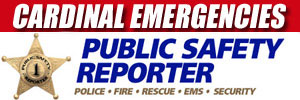To keep everyone working at optimal levels, a workplace needs to be equipped with the proper tools and procedures to handle an emergency. Only then can an employer make their workers feel safe in that environment. It’s for this reason that, in order to maintain functional and safe working conditions, each business must ensure that they hold up to inspections. A regular external inspection process not only ensures that working conditions are meeting legal standards, but also that they continue to do so for years to come. These are the different types of inspections in the workplace that keep all workers protected—no matter the industry.
Formal/Planned Inspections
Formal inspections are planned in advance to highlight specific aspects of the workplace and scrutinize them for inconsistencies with formal standards. This allows employers to see whether all precautions are in place and discover what resources they may need for the future. As such, planned inspections are often performed with a written checklist of guidelines and carried out regularly by a designated team. This way, they can ensure that nothing gets missed.
Informal Inspections
Also known as on-the-spot inspections, informal inspections are done by a company’s management to assess the general knowledge of their employees. Performing these inspections helps them diagnose any weak spots in their employee training and supplies them with the tools to make training better in the future. These quizzes or forms, filled out by the workforce, usually cover topics such as project procedures, workplace safety standards, and general workflow expectations.
Specialized Inspections
Unlike the other two types of workplace inspections, specialized inspections are conducted by specialists in specific industries to ensure that your equipment is in good condition. For many companies, this will involve having their electrical equipment, boilers, and mechanical systems checked for malfunctions and hazards. Those who also deal with manufacturing may need to call their suppliers in for regular checks as well.
Regulatory Inspections
Lastly, regulatory inspections deal with nationwide standards such as safety and business liability. Typically, surprise OSHA inspections fall under this category, as they require spontaneity to be the most effective. If a workplace is allowed to prepare for these inspections, then it defeats the purpose of monitoring an authentic environment. As such, this requires the inspected workplace to be functioning as they normally would in order for them to be accurately assessed.
facebook …
GET ALERTS on Facebook.com/CardinalEmergencies
GET ALERTS on Facebook.com/ArlingtonCardinal
Stay informed with news from PublicSafetyReporter.com’s Emergencies Behind the Scenes Facebook page — Facebook.com/CardinalEmergencies.

